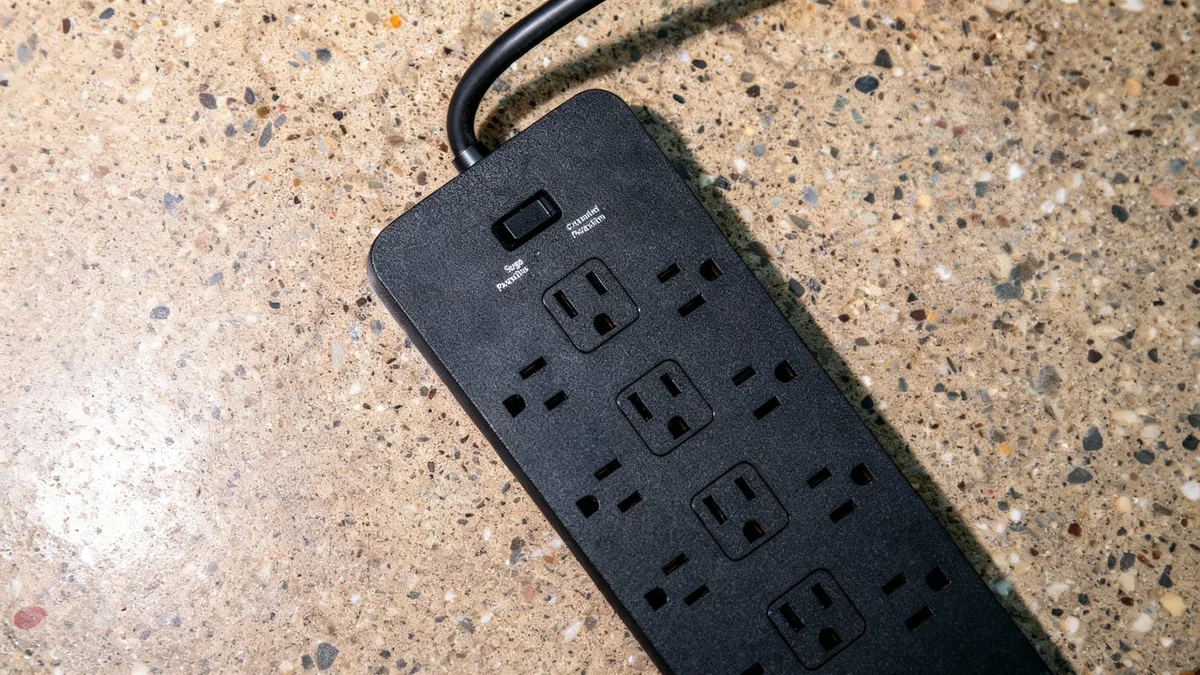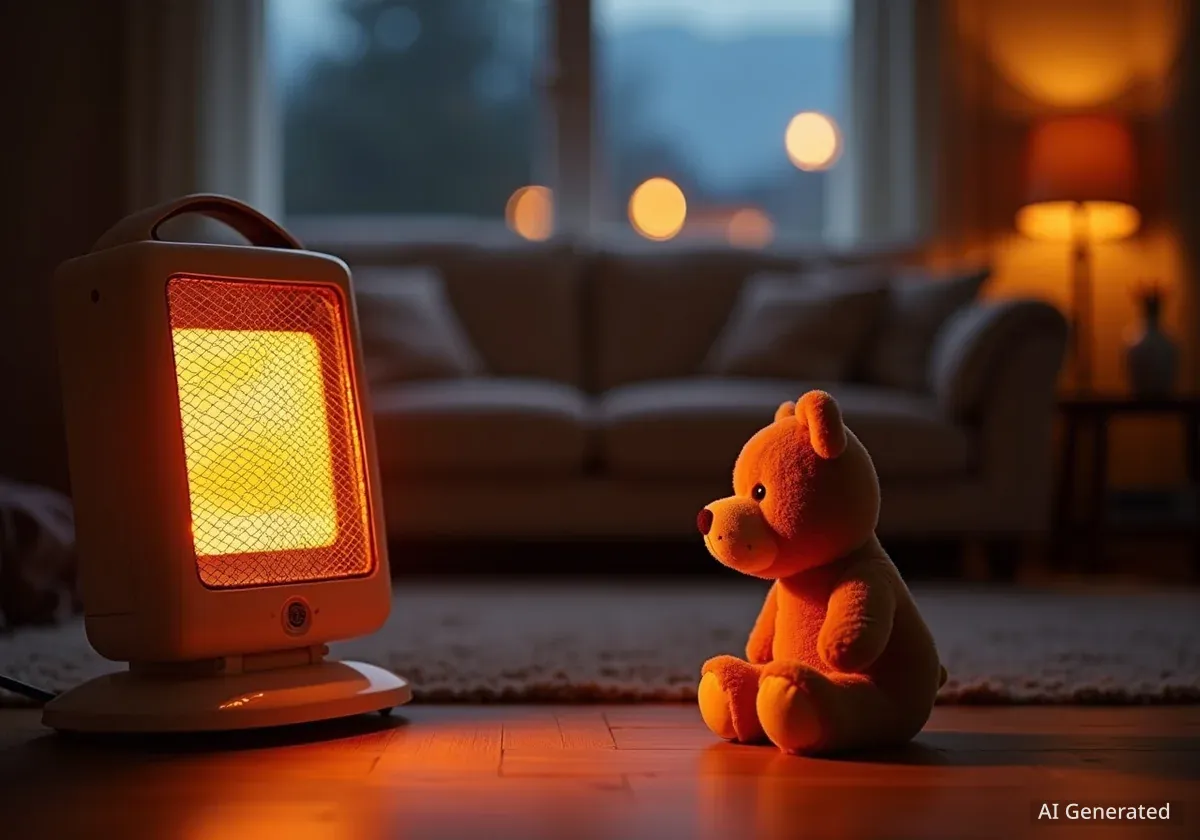As temperatures drop, many households turn to portable space heaters for an extra source of warmth. However, a common and seemingly harmless habit—plugging these devices into a power strip or extension cord—creates a significant and often overlooked fire hazard.
Electrical safety experts are issuing renewed warnings, highlighting that the high power demand of a typical space heater can easily overwhelm standard power strips, leading to overheating and potentially catastrophic fires.
Key Takeaways
- Space heaters should always be plugged directly into a wall outlet, never into a power strip or extension cord.
- A standard space heater can draw up to 1,500 watts, exceeding the safe capacity of most power strips.
- Overloading a power strip can cause its internal wiring to overheat, melt, and ignite a fire.
- Relying on a power strip's built-in circuit breaker is not a safe alternative, as it is not designed for such high-wattage appliances.
Understanding the Electrical Demand
The core of the issue lies in the immense amount of electricity a space heater requires to generate heat. Most portable models draw around 1,500 watts of power, which is the maximum capacity for a typical 15-amp household circuit.
When a space heater is plugged into a power strip, it forces this high electrical current through wiring that is not designed to handle such a sustained load. Even if the space heater is the only device plugged into the strip, its power draw can push the internal components beyond their limits.
By the Numbers: Power Consumption
A typical space heater on its highest setting uses approximately 1,500 watts. In contrast, a modern LED television might use 100 watts, and a laptop charger around 65 watts. This means a single space heater can draw as much power as 15 large TVs combined.
This sustained high current causes the wires inside the power strip to heat up significantly. Over time, this can lead to the degradation of the wire's insulation and the plastic casing of the strip itself.
The Path from Overheating to Fire
The danger begins when the power strip's wiring starts to overheat. This process can be slow and unnoticeable at first, but with repeated use, the damage accumulates. The protective plastic around the wires can soften and melt, exposing the live electrical conductors.
This can lead to several dangerous outcomes:
- Melting and Arcing: As the insulation fails, electrical arcing—or sparks—can occur between wires or components. These sparks can easily ignite the melting plastic of the power strip or nearby flammable materials like carpets, curtains, or furniture.
- Component Failure: The internal connections within the power strip can fail under the thermal stress, creating more heat and increasing the risk of a fire.
- Silent Hazard: Unlike a sudden short circuit, this overheating can build over hours of use, often without any obvious signs until it is too late.
The 'Three-Foot Rule' and Other Safety Measures
In addition to proper plugging, fire safety officials emphasize other critical rules for space heater use. The most important is the "three-foot rule," which advises keeping the heater at least three feet away from anything flammable, including bedding, furniture, curtains, and paper. Heaters should also be placed on a flat, level surface and never left running unattended or overnight.
Common Misconceptions About Power Strips
Many users believe that modern power strips with built-in surge protectors or circuit breakers offer sufficient protection. However, this is a dangerous misunderstanding of their function.
Why a Circuit Breaker Isn't a Failsafe
A circuit breaker on a power strip is designed to trip and cut power during a sudden surge or a short circuit. It is not intended to manage the sustained, high-wattage load of an appliance like a space heater.
While the breaker might trip if the load becomes too great, this is a sign that a dangerous situation has already occurred. Repeatedly resetting the breaker only puts further stress on the already overloaded components, increasing the risk of failure. It is a last-ditch safety feature, not a tool for regular load management.
"Plugging a high-wattage appliance like a space heater into a power strip is one of the most common mistakes we see, and it's a leading cause of preventable house fires in the winter," states a safety bulletin from the Electrical Safety Foundation International (ESFI). "The device's wiring simply isn't robust enough for that kind of electrical load."
Safe Alternatives and Best Practices
The only safe way to use a space heater is to plug it directly into a dedicated wall outlet. If the heater's cord cannot reach the desired location, the safest solution is to rearrange the room rather than use an extension cord.
For those needing to heat a larger area of a room, consider an oscillating model. These heaters rotate to distribute warm air more evenly, often effectively warming a space of up to 150 square feet without needing to be moved closer to the user.
Ultimately, convenience should never come at the expense of safety. By understanding the electrical principles at play and adhering to simple safety guidelines, users can enjoy the comfort of a space heater without introducing a serious fire risk into their homes.


